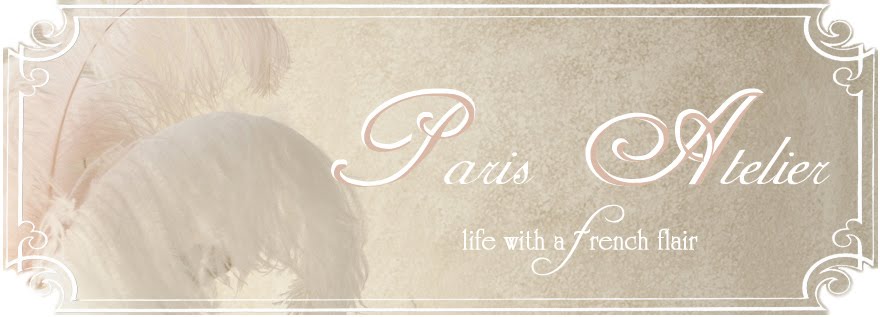I am so excited to have the incredibly talented and amazing author Laurel Corona as a guest on Paris Atelier today. She is one of my favorite authors and her talent is boundless! Laurel has just released Finding Emilie, this novel is beyond amazing. I just finished reading it today and I highly recommend it! I love everything about it, the details, the history, the elegance, everything French about it. Laurel has written some wonderful novels, Penelope's Daughter has long been another favorite of mine as well. A giant Thank you to Laurel COrona for this beautiful guest post! I hope you all enjoy it!
Atelier Paris Guest Blog Post
for
FINDING EMILIE
(Simon&Schuster/Gallery Books, April 2011)
Laurel Corona
Renaming Paris: The Place Royale and the Jardin de Roi
During the French Revolution and the Reign of Terror, Paris took on a new look. Gone were the statues of aristocrats and royals in the squares, gone even were the heads of many of the stone saints in Notre Dame and other churches. Gone too was the Bastille, the place most associated with the oppression of the past. Streets and buildings were renamed, and even the calendar was rewritten to celebrate the triumph of the people over the tyranny of the Ancien Régime.
Anything with the word “roi” or “royale” in it had to go, including two of the places most familiar to the heroine of my new novel, FINDING EMILIE. Lili, the daughter of the real-life mathematician and physicist Emilie du Châtelet, who died shortly after giving birth to her, grew up in one of the elegant townhouses lining what she knew as the Place Royale. At its center was a grand statue of Louis XIII, which was, as one might expect pulled down and melted for its bronze after the revolution. The square was renamed the Place de Vosges, and eventually, after the furor died down, a replacement statue was erected (an error in my book has it as a statue of Louis XIV--I hate it when that happens!)
Place de Vosges
The Place Royale, with its matching red-brick facades and vaulted arcades, was the model for future residential squares in Paris and other European cities. Meant to be a quiet and dignified place, then on the outskirts of Paris, for the well-to-do to live, it is still one of the most elegant spots in the city. Cafes look out on a tree-shaded square where in summer people lounge on park benches and picnickers play games on the grass. Turgot’s 1739 map of Paris shows what it looked like at the time my book is set, although the shade trees I include are a later addition.
Here’s the quick description I offer of this urban oasis in FINDING EMILIE:
The Place Royale, home to Hôtel Bercy, was one of the few places in Paris fit for a stroll. Even the gardens of the Tuileries were thick with the stench of garbage, and haunted by beggars and thieves. On dry and pleasant afternoons, those who lived behind the harmonious, arcaded mansions ringing the four sides of the Place Royale could leave behind the sedan chairs they used for calling on their neighbors elsewhere in town, and cross the quiet garden on foot.
Several key scenes occur in this garden, including Lili’s awakening to the cruel social realities of Parisian life, and the awakening of love between Lili’s best friend Delphine, with whom she was raised like a sister, and the future Comte d’Étoges.
For Lili, love blossoms on the other side of the Seine, at what was then known as the Jardin de Roi, today known as the Jardin des Plantes. The site looks quite different today, housing several museums and the Paris zoo along its perimeter. It retains vestiges of one of its primary purposes in the era before the revolution when my novel is set. It was the center of research into botany and zoology, and its head, George Louis LeClerc, the Comte de Buffon, was one of the most important scientific figures of his time.
Place Royale
The Jardin de Roi first appears in FINDING EMILIE when Lili is invited by the Comte de Buffon to spend an afternoon with him. In the greenhouse, Lili is astonished by a pale pink mantis, perfectly camouflaged on a stem of orchids, and the count explains, using evolutionary thinking he developed a century before Darwin.
“You see,” he said, taking Lili’s arm to go to the house for dinner. [...] “I don’t believe for a moment that God said during the creation, ‘Let there be orchids as well as mantises that look just like them.’ I believe instead that different types of plants and animals came into the world and thrived where they were put.”
The great man stopped for a moment once they had crossed the terrace in front of the greenhouse. They were standing in the middle of a grand walkway so long it disappeared from sight before reaching the end of the garden. Lost in thought, Buffon’s hands were clasped as he looked up at the plane trees lining the walk. Close to the house, gardeners trimmed the hedges of the formal garden, but farther away, the formal grounds meant for pleasant strolls gave way to the densely packed landscape of trees and medicinal plants in the working laboratory of the Jardin de Roi.
Jardin du Roi
“Things alter over time,” he said, picking up the subject as if his thoughts hadn’t strayed at all. [...] “The climate might get hotter or colder, or wetter or drier, and the perfect fit isn’t so perfect any more. So a plant might change colors or an animal grow spots, or more hair, or a tougher hide in order to adapt. Perhaps this poor little mantis was no good at capturing insects. He adapted to look like something the insects are attracted to, and voilà!”
Although broad expanses of lawn (forbidden to human feet) have replaced much of the formal gardens, strolling in the Jardin des Plantes today it is easy to get the feel for its former existence. A small garden of medicinal herbs honors its erstwhile scientific function, and promenades evoke a time when a walk here would have been the height of fashion. Just the place to put on a wig and panniers and pretend for a while--or maybe just get an ice cream and go to the zoo!
Thank you so much Laurel! Below are links to some of my favorite Laurel Corona books and the much anticipated and highly praised Finding Emilie.
















